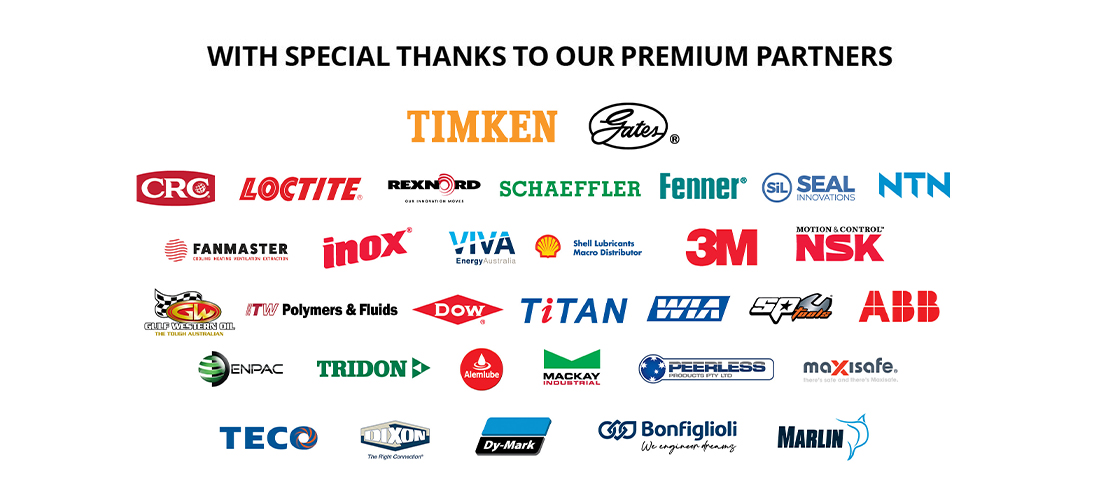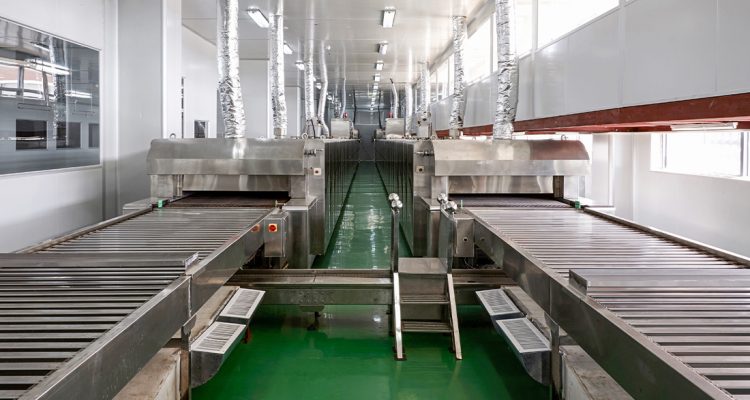A unique challenge in the industrial food and beverage processing sector is the requirement for preventative maintenance on machinery that has the potential to cause trace contamination in products.
The Australia and New Zealand Food Statistics board revealed that 55 per cent of product recalls were caused by chemical, foreign-body, or biological contamination, between 2008 and 2017 – resulting in millions of dollars in profit losses to manufacturers. 1
Businesses also risk falling out of favour with their customers when a recall is announced, which is why careful consideration must be made in the management of chemicals, greases and lubricants that are used in a food and beverage processing environment.
With recall concerns on the rise amongst manufacturers, Queensland-based company Candan Industries has taken steps to expand their INOX food-grade lubricant range in an effort to greatly reduce the risk of accidental contamination.
As a national distributor of INOX products, BSC is working in conjunction with managers and representatives to promote their range of food-safe oils and greases in the food and beverage sector across Australia, explains Steve Keown, BSC National Product Manager for Lubricants.
“INOX has three key product formulas developed for maintenance of machinery in food and beverage plants: MX3 FG, MX5 and MX6,” says Steve.
“The MX3 FG is a multi-purpose penetrating oil spray, ideal for threads and switches for protection from corrosion,” he elaborates. “The MX5 is an extreme pressure lubricant that contains Polytetrafluoroethylene (PTFE) for high load applications including high-speed drilling and machining. While the MX6 is a food-grade bearing grease that has a PAO-based oil and clay thickener which is excellent for bearings, chains, sprockets, geared joints, hinge and bushes.”
“INOX’s food-grade range are all NSF Certified with a H1 rating, for maximum protection of the produced goods; and in some cases, we have found these lubricants can enhance the performance of a piece of machined equipment,” adds Steve.
Over the last few years, the Australian Department of Agriculture has tightened up on standards and regulations for industrial products that will be utilised in the food manufacturing and processing sectors, aligning more closely with the U.S. Department of Agriculture (USDA) and National Sanitation Foundation (NSF) regulatory codes.
The USDA mandated food-grade designation for an H1 product means the approval and registration of a lubricant depends on the product’s ingredients. If a lubricant is intended for use in food processing environments where there is a risk of accidental contact, the formula must contain only the approved base stocks, additives, and thickeners listed in the USDA Code of Federal Regulations item: 21 CFR 178.3750. 2
Lubricants are mixtures of base oils and low levels of additives. Three types of base oils that are used to formulate food grade lubricants are pure grades of mineral oils that are highly refined from naturally occurring deposits of petroleum, synthetic base oils such as polyalphaolephins (PAOs), polyalkalene glycols (PAGs) and silicones, and vegetable oils including castor, palm, soybean, canola and sunflower oils. 3
According to Steve, it is necessary to modify base oils with additives so that they can perform as an effective lubricating agent. Additives are small but critical ingredients to a high-quality oil and grease. They are selected based on performance requirements and possible interactions with oils and other additives.
Some examples of additives used in food grade lubricants are friction modifiers, anti-wear additives, extreme pressure additives, antioxidants, and rust inhibitors.
Occupational Health, Safety and Environment Advisor at Candan Industries, Charmaine Bondeson, says the development of INOX H1 products was the direct result of end-user requirements that were previously being unmet within the market.
“To develop these products, some of the requirements we had to consider were that the product had to be non-staining and contain no dyes,” explains Charmaine. “It also had to be very low in aromatics.” But the real point of difference, she explains, is the inclusion of the PTFE ingredient which works to reduce wear, heat, and friction on a machined component, and is completely nontoxic.
The INOX MX3 FG was introduced in 2008 as a low-odour equivalent to the original MX3. The MX3 FG is odourless, tasteless, allergen-free, and NZ MPI C15 certified.
“The MX3 can be used in food processing plants, beverage filling lines, meat abattoirs, canneries, bakeries, cold storage facilities, and on electrical components, parts, and equipment” says Charmaine. “MX3 FG can be used wherever a low odour food grade lubricant is required.”
The INOX MX5 has formulaic similarities to the MX3 FG but with the added PTFE as an extreme pressure friction modifier. A slick, anti-corrosion, anti-moisture liquid lubricant, it was formulated with the high-grade friction modifier PTFE to handle high speeds, high loads, constant friction, and high temperatures, according to Charmaine. It is also non-toxic, low odour, and totally food safe.
“MX5 can be used in a variety of situations where previously two or more products may have been required,” explains Charmaine. “It is suitable on applications that require less friction, or are subject to extreme temperature fluctuations, across the industrial sector and significantly for food and beverage processing plants.”
MX5 with PTFE is a particularly viable option when a food-grade lube is required for wet areas where corrosion is a risk,” she adds. “It achieves this by a coating of low-friction corrosion protectant, rendering it hydrophobic – so it’s water repellent,” highlights Charmaine.
The MX6 bearing grease is a synthetic high temperature formula made with an organo clay bentone thickener and additives that protect against corrosion and oxidation of metals.
“The MX6 is recommended for lubrication applications where high temperatures are present or particular cold temperatures, such as refrigeration applications,” says Charmaine. “MX6 grease is ideal for bearings and conveyors lines at farms or on plantations. It can also be used in meat and poultry plants, hatcheries, wineries and vineyards, coffee roasters, bakeries and dough mixers.”
Customer satisfaction with the MX6 grease product has been reportedly high, Charmaine notes: “Our internal reporting has indicated that our customers have been very happy with the quality of the MX6.”
“Weighing time versus money – we have found that customers prefer to invest in quality, reliable products that avoid costly repairs and maintenance, or a possible breakdown of a critical piece of machinery that ultimately will cost more in terms of downtime on the production line,” adds Charmaine.
Overall, it seems that INOX has been addressing the concerns of manufacturers and achieved the aim of meeting and exceeding their requirements for avoiding incidental food contamination and product recalls.
INOX’s close relationship with BSC has resulted in close collaboration with BSC sales and technical representatives. In turn, BSC sales representatives have been working to spread awareness about food-grade lubricant regulations and standards to operators and procurement managers.
References:
1. Food-safe lubricants: Here’s what you need to know to avoid a costly recall. Engineers Australia.
2. The Basics of Food-grade Lubricants. Sabrin Gebarin. Machinery Lubrication.
3. Food grade lubricants – are they environmentally friendly and biodegradable? Dr Mary Moon. New Food Magazine.




